Historically, the backbone of pharmaceutical publication planning has been the meticulous orchestration of clinical study programs. These programs, designed and executed, serve as the cornerstone of evidence-based medicine. Within this framework, the imperative for pharmaceutical companies has been twofold: firstly, to adhere to regulatory obligations necessitating the registration and dissemination of clinical study results in a timely manner, and secondly, to ensure that these findings reach their intended audience with maximum impact.
Central to this traditional approach are several key considerations. The question of “who” assumes paramount importance, as the selection of authors shapes not only the credibility but also the perspective from which the data are presented. Equally significant is the timing of publication, which must strike a delicate balance between the need for expediency and the imperative for thoroughness. Furthermore, the choice of venue, be it a prestigious journal or a renowned conference, can significantly influence the reception and dissemination of the findings.
Addressing Changes in Healthcare Decision Makers’
In recent years, healthcare decision makers have undergone a profound transformation. No longer confined to a select group of professionals, decision-making now encompasses a diverse array of stakeholders, each with their own set of values, priorities, and demands for data. Physicians, traditionally at the forefront of medical decision-making, are now joined by payers, patients, and policymakers, each wielding significant influence over treatment protocols, reimbursement decisions, and healthcare policies.
This evolving area necessitates a corresponding evolution in publication planning strategies. While clinical efficacy remains paramount, it is no longer the sole determinant of a treatment’s value. Decision makers now seek a broader understanding of a treatment’s impact, spanning economic, social, behavioural, and policy dimensions. As such, publication planning must expand its view to encompass this multidimensional perspective, exploiting all available evidence to articulate the comprehensive value proposition of a health intervention.
Shifting Focus from Clinical Benefits to Comprehensive Value
The definition of value has undergone a profound transformation. While traditional assessments primarily focused on clinical efficacy metrics such as survival rates and disease progression, contemporary perspectives recognise the need for a more holistic understanding of value. This shift reflects a broader recognition that the impact of healthcare interventions extends far beyond clinical outcomes alone.
Patient-Reported Outcomes (PROs), a pivotal component in the quest to capture the multidimensional nature of value. Unlike conventional measures, PROs offer a direct line of insight into patients’ subjective experiences, perceptions, and priorities. By soliciting feedback directly from individuals undergoing treatment, PROs provide a nuanced understanding of the real-world effects of interventions, delving into aspects of health and well-being that are often overlooked by traditional clinical assessments.
Insights Offered by PROs into Clinical, Social, and Behavioural Outcomes
At the heart of PROs lies their ability to transcend the boundaries of clinical endpoints, offering insights into a spectrum of outcomes that encompass not only physical health but also social, emotional, and behavioural dimensions. From a clinical standpoint, PROs offer valuable insights into symptom burden, treatment side effects, and functional status, elements that hold significant sway over patients’ day-to-day lives but may not always be captured by objective measures alone.
Beyond the clinical setting, PROs provide a window into the broader impact of disease and treatment on patients’ lives. They shine a light on the social and emotional toll of illness, revealing nuances such as changes in quality of life, emotional well-being, and social functioning. Additionally, PROs offer invaluable insights into patients’ treatment preferences, adherence behaviours, and perceived benefits and risks, a crucial aspect of shared decision-making and patient-centered care.
By incorporating PROs into publication planning strategies, pharmaceutical companies can enrich their narrative of a treatment’s value proposition. From illustrating improvements in patient-reported symptoms to showcasing enhancements in social functioning and treatment adherence, PROs offer a comprehensive view of the holistic benefits of medical interventions. In an era where value-based healthcare is increasingly prioritised, PROs serve as a powerful tool for aligning interventions with patients’ needs, preferences, and priorities, ultimately enhancing the delivery of personalised and patient-centred care.
Beyond Reporting PRO Endpoints
At the forefront of PRO publication prospects is the development and validation of PRO instruments. Whether pioneering new measures or adapting existing ones to novel contexts, this process represents a cornerstone of PRO research. Methodological papers detailing instrument development methodologies, psychometric properties, and validation studies provide critical insights into the reliability, validity, and responsiveness of PRO measures. Furthermore, publications showcasing the application of PRO instruments in real-world settings offer invaluable contributions to the field, bridging the gap between clinical research and everyday clinical practice.
Beyond clinical trials, PROs offer fertile ground for standalone publications from randomised controlled trials (RCTs) and real-world evidence (RWE) studies. These publications delve into the patient experience, treatment preferences, and outcomes, shedding light on the real-world effectiveness and impact of interventions. By elevating the patient voice and perspectives, these studies enrich our understanding of healthcare outcomes and inform evidence-based decision-making across diverse clinical contexts.
In addition to quantitative PRO data, qualitative insights play a pivotal role in elucidating the human dimensions of health and illness. Thematic interviews, preference studies, and patient-reported surveys offer rich narratives that complement quantitative findings, providing context, depth, and nuance to our understanding of patient experiences. While often underappreciated, qualitative research presents valuable opportunities for publication in mainstream peer-reviewed journals, fostering a more holistic understanding of patient perspectives and priorities.
Importance of Systematic Literature Reviews and Qualitative Data
Systematic literature reviews serve as pillars of evidence synthesis, offering comprehensive insights into the area of PRO instruments and their applications. Early in the research process, conducting systematic reviews of PRO instruments provides essential groundwork for subsequent studies, informing instrument selection and study design. While traditionally relegated to internal documentation, the publication of systematic reviews contributes to the methodological rigor and transparency of PRO research, guiding researchers, clinicians, and policymakers in evidence-based decision-making.
Similarly, qualitative data offer invaluable glimpses into the lived experiences of patients and caregivers, uncovering the intricate nuances of illness, treatment, and recovery. Whether through in-depth interviews, focus groups, or narrative analyses, qualitative studies illuminate the emotional, social, and cultural dimensions of health outcomes, enriching our understanding of patient-centred care. By amplifying patient voices and narratives, the publication of qualitative findings fosters empathy, compassion, and patient-centeredness within the healthcare community.
Identifying PRO Data for Publication
Publication planning for PROs begins with a meticulous assessment of the data generated from studies, ensuring alignment with publication objectives and target audiences. This entails scrutinising clinical trial protocols to identify PRO endpoints and mapping out potential publication opportunities. Whether it’s introducing novel PRO instruments or exploring established measures in new contexts, the identification process lays the groundwork for a strategic and impactful publication plan.
Beyond the confines of clinical trials, PRO data emanate from a diverse array of sources, including real-world evidence studies, qualitative research, and systematic literature reviews. Each dataset presents unique insights into patient experiences, treatment preferences, and healthcare outcomes, offering valuable contributions to the PRO publication area. By implementing the breadth and depth of PRO data, publication planning endeavours to capture the richness and diversity of patient-reported experiences, informing evidence-based decision-making and enhancing patient-centred care.
Clinicians, Patients, and Caregivers
Effective publication planning necessitates collaboration with diverse stakeholders, including clinicians, patients, and caregivers. Involving clinicians as authors brings essential clinical perspectives and validation to PRO studies, enhancing their relevance and applicability in real-world settings. By contextualising PRO findings within the broader clinical area, clinician authors bridge the gap between research evidence and clinical practice, fostering the translation of PRO data into meaningful patient outcomes.
Similarly, engaging patients and caregivers as authors ensures that PRO data accurately reflect their lived experiences, fostering authenticity and resonance with the target audience. By amplifying patient voices and narratives, patient and caregiver authors enrich the PRO publication arena, instilling research findings with empathy, relevance, and patient-centeredness. Through collaborative authorship, publication planning endeavours to uphold the principles of inclusivity, diversity, and patient engagement, ensuring that PRO publications resonate with diverse stakeholder perspectives.
Reaching the Right Audience
Selecting the right journals and conferences is paramount to maximising the impact and visibility of PRO publications. Beyond traditional PRO-focused venues, strategic considerations encompass the diverse interests and preferences of target audiences, including physicians, patients, payers, and policymakers. By customising publication strategies to mainstream clinical journals and conferences, PRO data can reach a broader audience and inform evidence-based decision-making across diverse healthcare settings.
Thorough research into journal receptiveness, editorial expertise, and audience demographics ensures alignment with publication objectives and target audience preferences. Furthermore, proactive engagement with conference organisers and journal editors facilitates strategic dissemination of PRO findings, enhancing visibility and recognition within the scientific community. By exploiting diverse publication channels and platforms, publication planning endeavours to maximise the reach and impact of PRO research, fostering knowledge translation and uptake among diverse stakeholders.
Writing Clear and Engaging PRO Studies
Creating PRO publications that are clear, compelling, and engaging is essential to effectively communicate research findings to diverse stakeholders. Adhering to reporting standards such as CONSORT-PRO and ISOQOL guidelines ensures methodological rigor and transparency in PRO reporting, strengthening the credibility and trustworthiness of study findings.
Moreover, leveraging insights from regulatory bodies such as the FDA and EMA facilitates adherence to validation requirements, enhancing the scientific robustness and regulatory compliance of PRO publications. By adopting a clear and engaging writing style, PRO studies can captivate readers and facilitate comprehension, fostering knowledge translation and uptake among diverse audiences.
Going Beyond Traditional Publication Formats
While journal articles and conference presentations remain vital components of scholarly communication, they may not always suffice to convey the full depth and significance of PRO research. Therefore, there’s a growing imperative to explore alternative formats and supplementary materials that can amplify the impact and reach of PRO research, catering to diverse audience preferences and information needs.
Plain Language Summaries, Infographics, and More
Supplementary materials serve as indispensable tools in augmenting the understanding and reach of PRO publications, offering a multifaceted approach to disseminating research findings. Among these, Plain Language Summaries (PLS) stand out as invaluable assets, distilling complex research findings into accessible language that resonates with diverse stakeholders. By translating technical terminology and scientific jargon into lay terms, PLSs facilitate broader comprehension among non-specialist audiences, bridging the gap between researchers and end-users.
In addition to PLSs, infographics emerge as powerful vehicles for visual storytelling, condensing data and insights into visually engaging formats. Through the strategic use of colour, imagery, and design elements, infographics convey key messages in a concise and memorable manner, captivating audience attention and facilitating information retention. By leveraging the innate human affinity for visual stimuli, infographics offer a compelling avenue for communicating PRO research to a broader audience base.
Furthermore, multimedia formats such as author videos, animations, and interactive annotated publications provide immersive experiences that deepen audience engagement and understanding. By incorporating dynamic elements and interactive features, these multimedia resources convert passive readers into active participants, fostering deeper connections with the research content. Whether through animated narratives or interactive visualisations, multimedia formats enhance the accessibility and appeal of PRO research, catering to diverse learning styles and preferences.
Maximising Effectiveness while Ensuring Compliance
While the proliferation of supplementary materials offers exciting opportunities to enhance the reach and impact of PRO publications, it also underscores the importance of maintaining adherence to regulatory and ethical guidelines. Compliance with relevant regulatory requirements, including those stipulated by the FDA and EMA, is essential to uphold the integrity and credibility of PRO research. Additionally, adherence to promotional guidelines and ethical standards is paramount to ensure transparency and integrity in the dissemination of research findings.
By adopting a proactive approach to compliance and ethics, stakeholders can navigate the complexities of publication planning with confidence, safeguarding the trust and confidence of both professional and lay audiences. Furthermore, by aligning supplementary materials with best practices in communication and design, stakeholders can maximise the effectiveness of their dissemination efforts while upholding the highest standards of scientific rigor and ethical conduct.
Recognising the Contribution of Patients
At the heart of every piece of research lies the invaluable input of patients. Their willingness to share their experiences, participate in studies, and provide crucial insights is pivotal in shaping healthcare. By acknowledging their indispensable role, we honour their contribution to the advancement of scientific knowledge and the improvement of patient care. Patients are not merely subjects of research but active partners whose voices and experiences guide us towards more patient-centric approaches to healthcare delivery.
In PROs, patients’ contributions are particularly significant. Their first-hand accounts and perspectives provide invaluable insights into the impact of diseases and treatments on their daily lives, functioning, and overall well-being. By capturing these insights through PRO measures, we gain a deeper understanding of patients’ needs, preferences, and priorities, thereby informing more holistic and personalised approaches to healthcare.
Conclusion
In conclusion, pharmaceutical publication planning is undergoing profound evolution, marked by a shift towards patient-centred outcomes and a multidimensional understanding of value in healthcare interventions. Historically rooted in clinical efficacy metrics, publication planning now embraces PROs as pivotal tools for capturing the holistic impact of treatments on patients’ lives.
As healthcare decision-making expands to include a diverse array of stakeholders, from physicians to patients to policymakers, publication planning strategies must adapt accordingly. This entails not only incorporating PROs into study designs but also ensuring that these findings are disseminated effectively to inform evidence-based decision-making.
Furthermore, the inclusion of qualitative insights alongside quantitative PRO data enriches our understanding of patient experiences and preferences, fostering empathy and patient-centeredness within the healthcare community. Systematic literature reviews and adherence to reporting standards further enhance the credibility and transparency of PRO research, guiding researchers, clinicians, and policymakers in evidence-based practice.
Collaboration with diverse stakeholders, including clinicians, patients, and caregivers, is essential to ensure that PRO publications resonate with their intended audience. By reaching the right audience through strategic dissemination channels and formats, such as PLS’s and infographics, PRO research can maximise its impact and accessibility.
Finally, at the heart of every PRO publication lies the recognition of patients as active partners in research and healthcare. Their contributions shape the narrative of value in healthcare interventions, guiding us towards more patient-centric approaches that prioritise their needs, preferences, and priorities. By honouring their voices and experiences, we uphold the principles of inclusivity, diversity, and patient engagement, ultimately advancing the quality and effectiveness of healthcare delivery.






